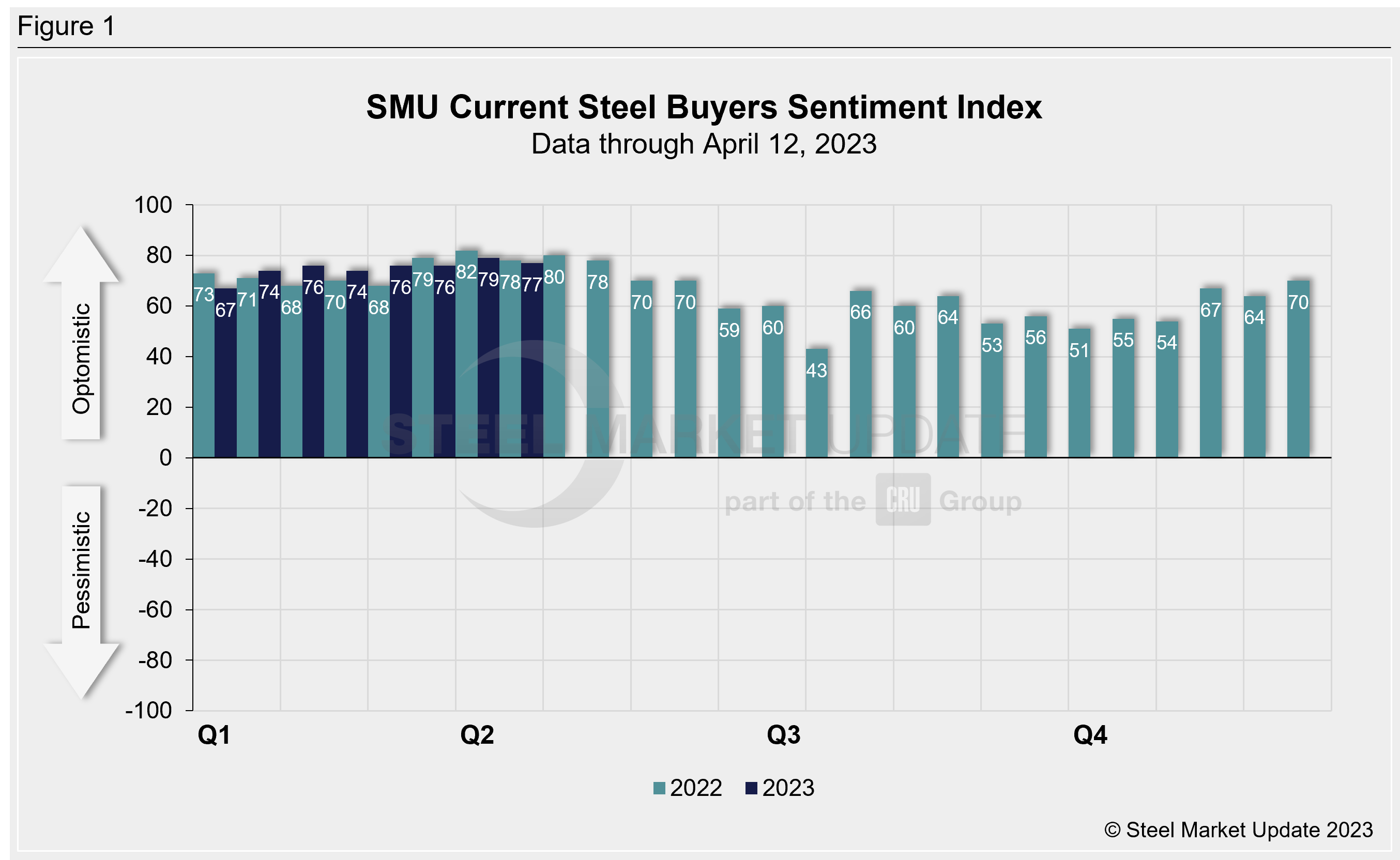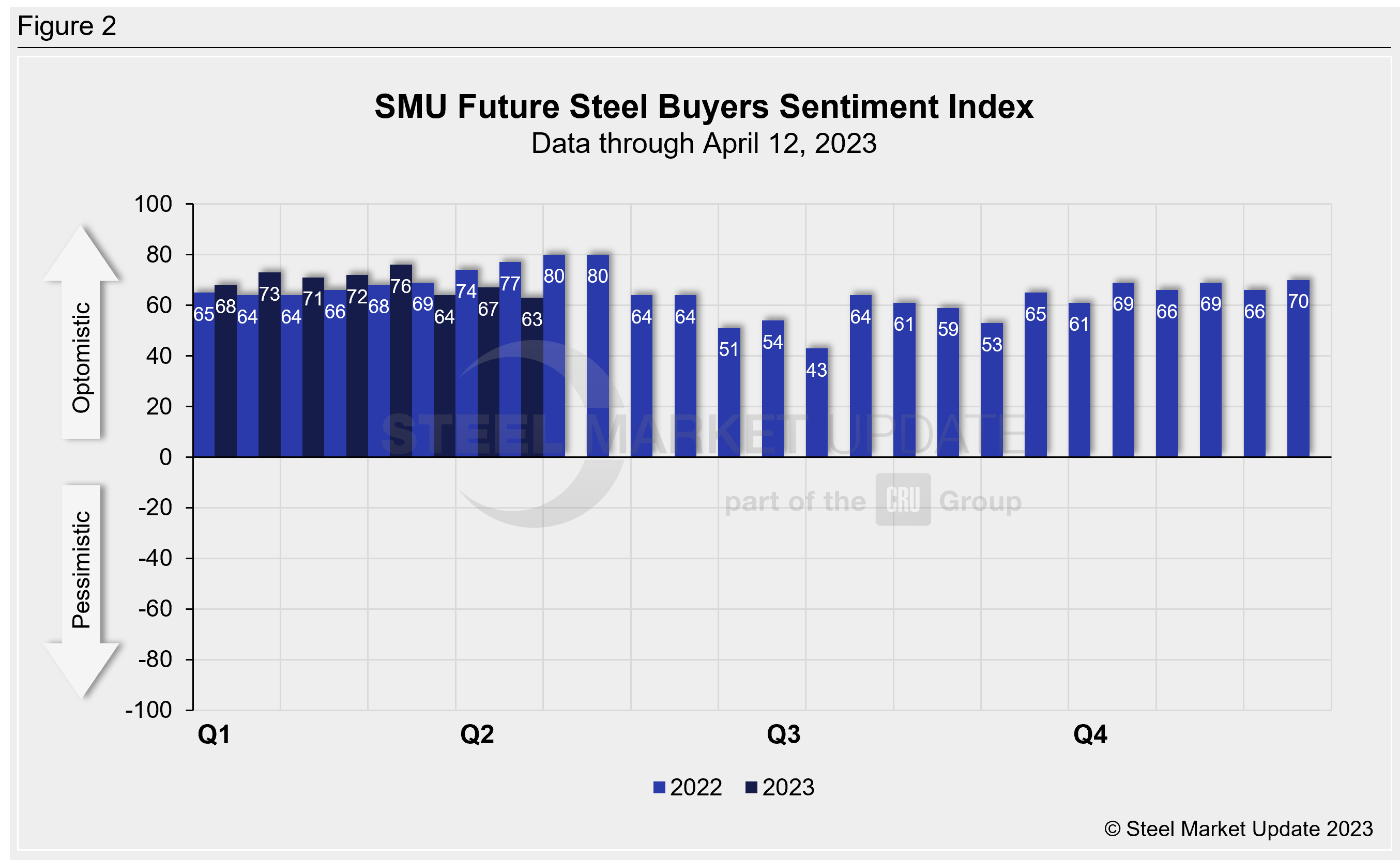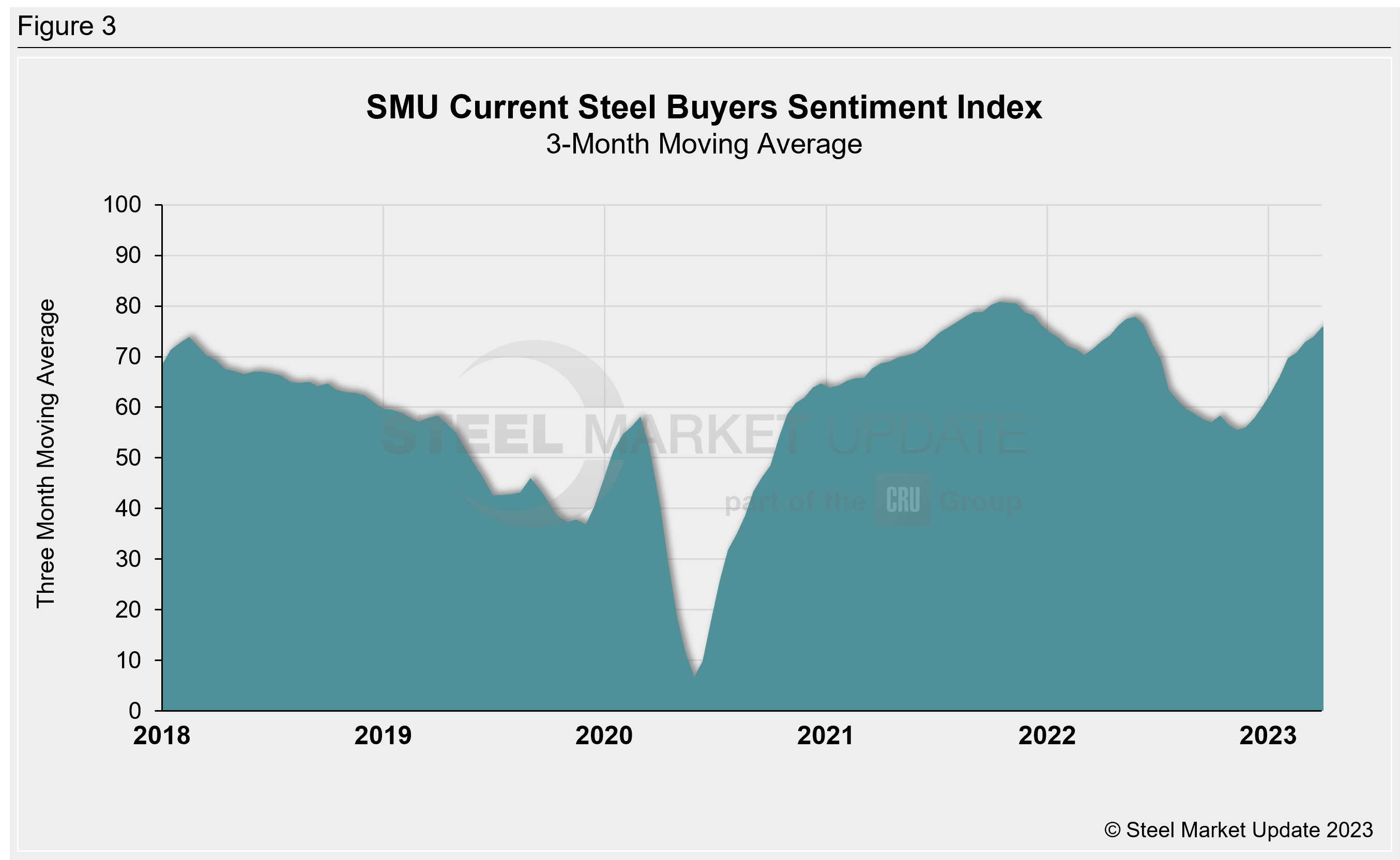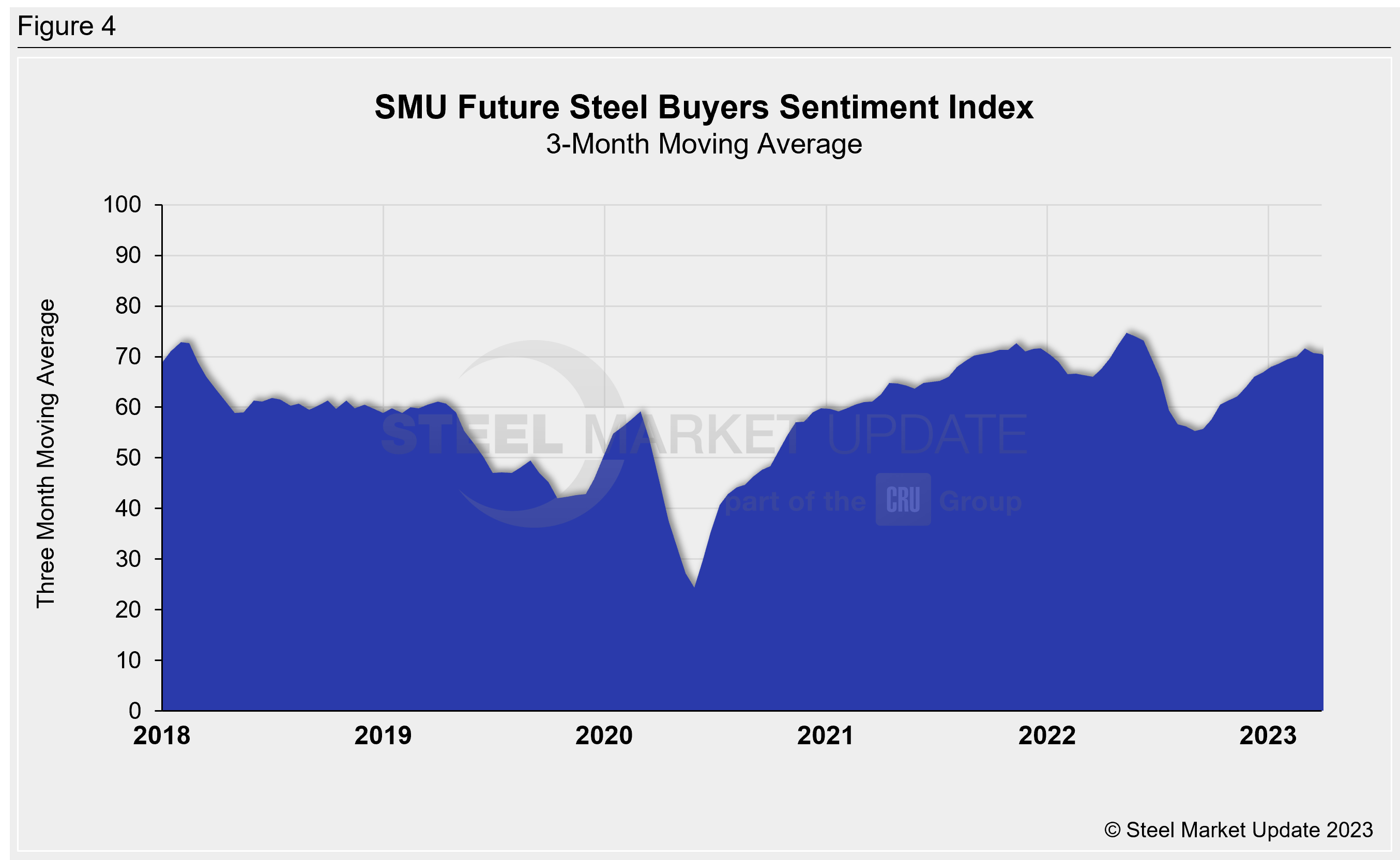Steel Products Prices North America
SMU Current, Future Buyers Sentiment Indices Edge Down
April 14, 2023
SMU’s Steel Current and Future Buyers Sentiment Indices have both slipped from two weeks ago as the gap between them has widened, according to SMU’s most recent survey data.
The Steel Buyers Sentiment Indices measure how steel buyers feel about their company’s ability to be successful in the current market, as well as three to six months down the road. Every other week we poll steel buyers about sentiment. We have historical data going back to 2008.
SMU’s Current Buyers Sentiment Index stood at +77, off two points from the last market check (Figure 1). While steel buyers still remain relatively bullish about current conditions, it’s too early to tell if this drop indicates a trend.

SMU’s Future Buyers Sentiment Index measures buyers’ feelings about business conditions three to six months in the future. This index fell four points to +63 compared with two weeks ago. Relatively in sync since the start of the year, a gap opened up between current and future sentiment in the middle of last month, widening this week to 14 points.

Measured as a three-month moving average, the Current Sentiment 3MMA increased to to +76.33, up half a point from the previous check. (Figure 3).

The Future Sentiment 3MMA was +68.83, down 1.67 points from +70.5 at the previous check. (Figure 4).

What SMU Survey Respondents Had to Say:
“All depends on demand.”
“We are very good at what we do and can absorb some but not all of the high cost of steel.”
“Demand is strong, cost is too high.”
“The rapid increase in interest rates will continue to take a toll on the economy/steel demand as new capacity ramps up.”
“Inventories are in a good position.”
“Our sales are down directly related to our increased price to the market, which is dictated by the high cost of steel.”
About the SMU Steel Buyers Sentiment Index
The SMU Steel Buyers Sentiment Index measures the attitude of buyers and sellers of flat-rolled steel products in North America. It is a proprietary product developed by Steel Market Update for the North American steel industry. Tracking steel buyers’ sentiment is helpful in predicting their future behavior.
Positive readings run from +10 to +100. A positive reading means the meter on the right-hand side of our home page will fall in the green area indicating optimistic sentiment. Negative readings run from -10 to -100. They result in the meter on our homepage trending into the red, indicating pessimistic sentiment. A reading of “0” (+/- 10) indicates a neutral sentiment (or slightly optimistic or pessimistic), which is most likely an indicator of a shift occurring in the marketplace. Sentiment is measured via SMU surveys that are conducted twice per month.
We send invitations to participate in our survey to hundreds of North American companies. Approximately 45% of respondents are service centers/distributors, 30% are manufacturers, and the remainder are steel mills, trading companies, or toll processors involved in the steel business.
Click here to view an interactive graphic of the SMU Current Steel Buyers Sentiment Index and of the SMU Future Steel Buyers Sentiment Index.
By Ethan Bernard, ethan@steelmarketupdate.com
Latest in Steel Products Prices North America

Nucor slows HRC price climb with $5/ton increase
After eight weeks of double-digit price increases on hot-rolled (HR) coil, Nucor slowed the price rise this week with an increase of $5 per short ton.

Domestic CRC prices surge ahead of imports
The price spread between stateside-produced CR and imports reached its widest margin in over a year.

Evraz raises plate prices $160/ton
Evraz North America (NA) has followed Nucor and SSAB with a plate price increase of its own: up $160 per short ton (st). The increase was effective immediately for all new orders of carbon, high-strength low-alloy, and normalized and quenched-and-tempered plate products, as well as for hot-rolled coil, the steelmaker said in a letter to […]

Nucor lifts HR coil to $820/ton
Nucor has increased its consumer spot price (CSP) for hot-rolled (HR) coil for a fourth consecutive week.

Nucor pushes HR spot price to $790/ton
Nucor increased its consumer spot price (CSP) for hot-rolled (HR) coil to $790 per short ton (st) on Monday, Feb. 10 – a $15/st bump vs. last week. The Charlotte, N.C.-based company has raised its weekly CSP by $40/st over the past three weeks after maintaining tags at $750/st since Nov. 12, according to SMU’s […]
